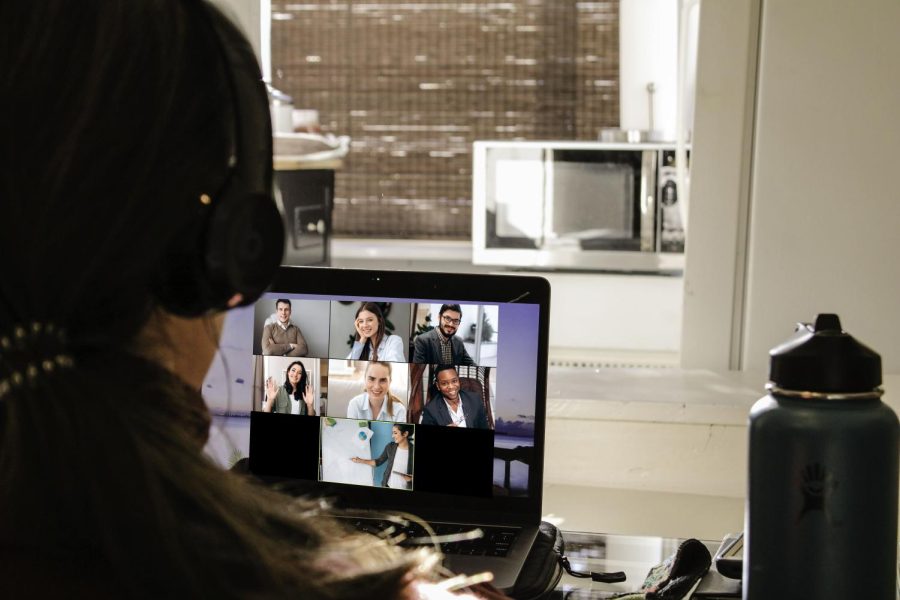College introduces blended class format
Students will have the opportunity next semester to take classes in a variety of platforms that mix online, face-to-face, and Zoom or Microsoft Teams
December 1, 2022
Students who take 15-week classes online that incorporate Zoom or Teams meetings next semester will be able to choose between courses having one required virtual session a week or two.
The new “Online Blended” format with one virtual meeting a week is similar to a practice that many professors followed during the pandemic. But this semester, professors were required to offer two virtual class meetings each week instead of one.
Classes with twice-a-week virtual meetings are called “Online Sync.”
“Because [students’] lives are very full, they need that flexibility,” Dean for Learning Advancement and the Virtual Campus Colleen Eisenbeiser said. “So I love the idea that we can provide them something that meets the way they learn best, but also at the same time, can blend with the lifestyle that they have.”
The college will offer 80 sections of Online Blended classes, which will allow students to take courses without having to come to campus.
“I think community colleges in particular, have students that are so diverse,” Eisenbeiser said. “You’ve got folks that are holding down multiple jobs that have families that have jobs that, you know, are different shifts and things of that nature.”
The college will continue piloting a hybrid class type called “Flex,” which allows students to choose each day whether they want to attend class in person or online.
For Blended, Sync and Flex classes, “there will be required times that you have to be online with your faculty member and all the other students in your class,” Eisenbeiser said. “So you’ll have that interaction piece. But it’ll just save you from having to get in your car and go somewhere.”
Some students said online courses can be useful, but aren’t for everyone.
“I think for some people it can be really helpful,” second-year American Sign Language student Lexi Greider said. “It’s not for everyone, though, because you can lag behind if you don’t meet for class regularly. I know sometimes I tend to get behind on stuff. But if it works for others, then it’s a good idea.”
Eisenbeiser said some faculty who tested online blended courses when the college was closed because of the COVID-19 pandemic liked the class type and the flexibility it offered compared with traditional formats.
“They had been doing it in English classes in particular and in some art classes, and there are others as well,” Eisenbeiser said. “Faculty … really found it was sort of the best of both worlds.”
Some students said they like having a choice.
“I really like that because there’s some things that I just excel [at,] like, by myself,” first-year nursing student Amira Njoya said. “There’s other classes where I need to be in person, like a science course. But, like a math course, I feel better online because it’s easier. … You don’t have to come on campus as much. It’s better.”












